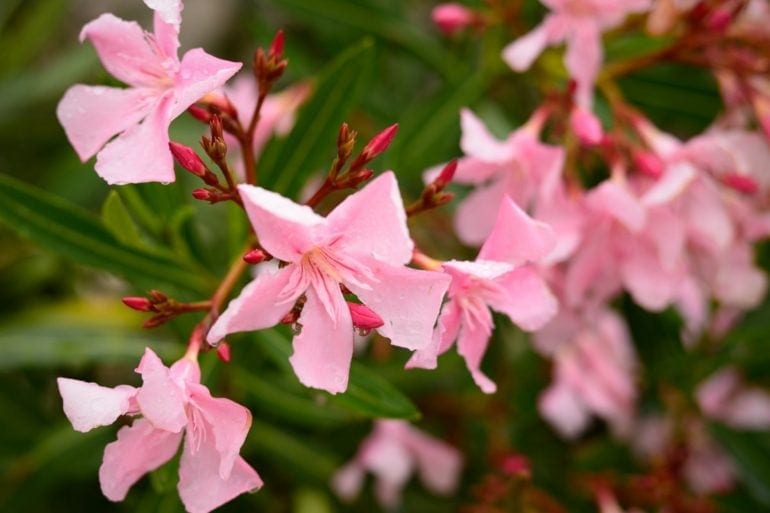It’s no wonder that oleander plants are so popular: they look nice, flower throughout the year, can survive in lots of different weather, and require little water or maintenance.
Apart from making an appearance in gardens from coast to coast, in many states — including California and Florida — it’s commonly seen alongside freeways and on medians.
But just because oleander is all over the place doesn’t mean it’s always a G-rated plant. In fact, it’s the opposite: it can be deadly.
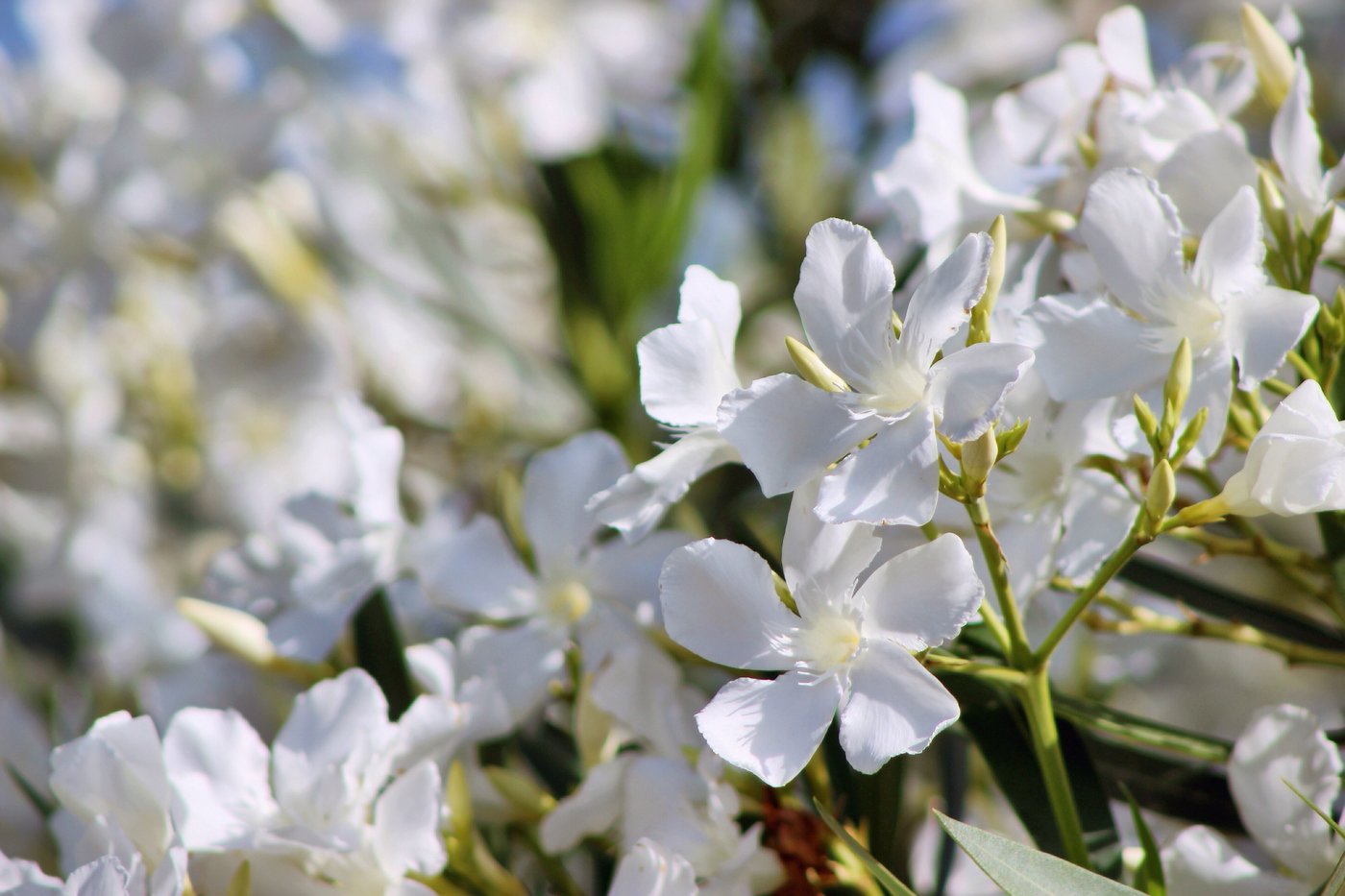
Are oleander plants really poisonous?
Oleander (Nerium oleander) is a hardy, easy-to-grow flowering plant, mainly found in the lower half of the US.
You might have heard when you were a kid that oleander flowers were poisonous — but did you think that they were actually dangerous, or that your parents were just being over-protective?
Pretty, deadly
The oleander is a pretty plant, with narrow leaves and flowers that can be white, pink, salmon, red, orange or yellow. (It’s important to know that not all oleander flower shapes are the same — some look almost trumpet-like, as shown below.)
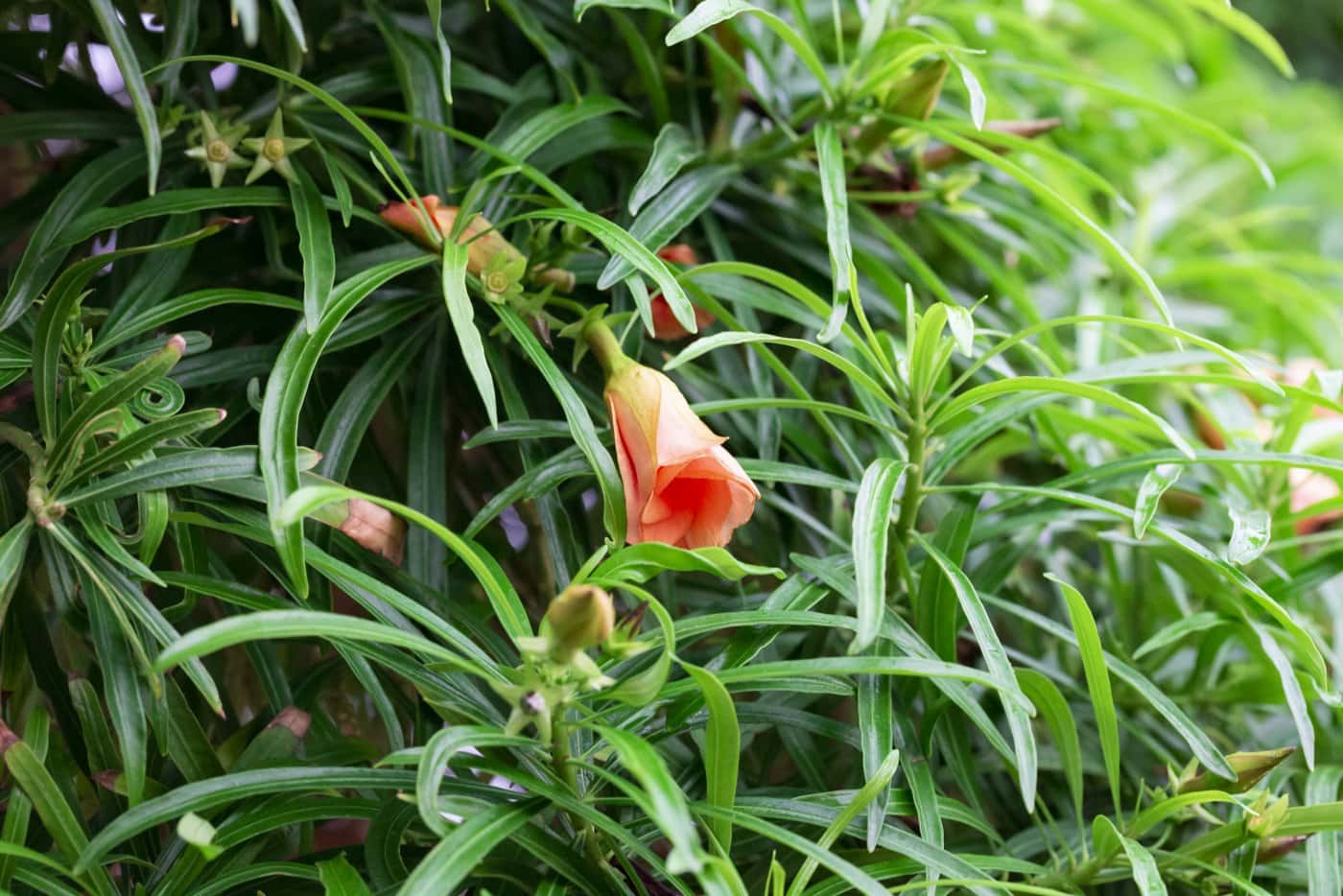
It’s so pretty and common, in fact, that many people don’t realize that — yes — it can be dangerous. It’s is not only poisonous to human adults and children, but almost all types of animals can be affected — even chickens got heart attacks and died from it.
Unfortunately, the whole oleander plant can mean bad news — from the leaves to the flowers, the roots to the twigs, the stems to the seeds — and whether eaten, licked, chewed, inhaled or otherwise consumed.
Just touching it — fresh or dried out — could potentially cause irritation, and smoke from burning cuttings can potentially cause severe reactions. (If you look back far enough in medical literature, you can even find old reports that say you could get poisoned by eating honey made by bees that visited an oleander plant for nectar.)
The International Oleander Society says that you should be sure to wash your hands and arms thoroughly when finished working with the plant. They add, “Do not chew on any part of the plant. And do not use it as a skewer for food (or as a toothpick!).”
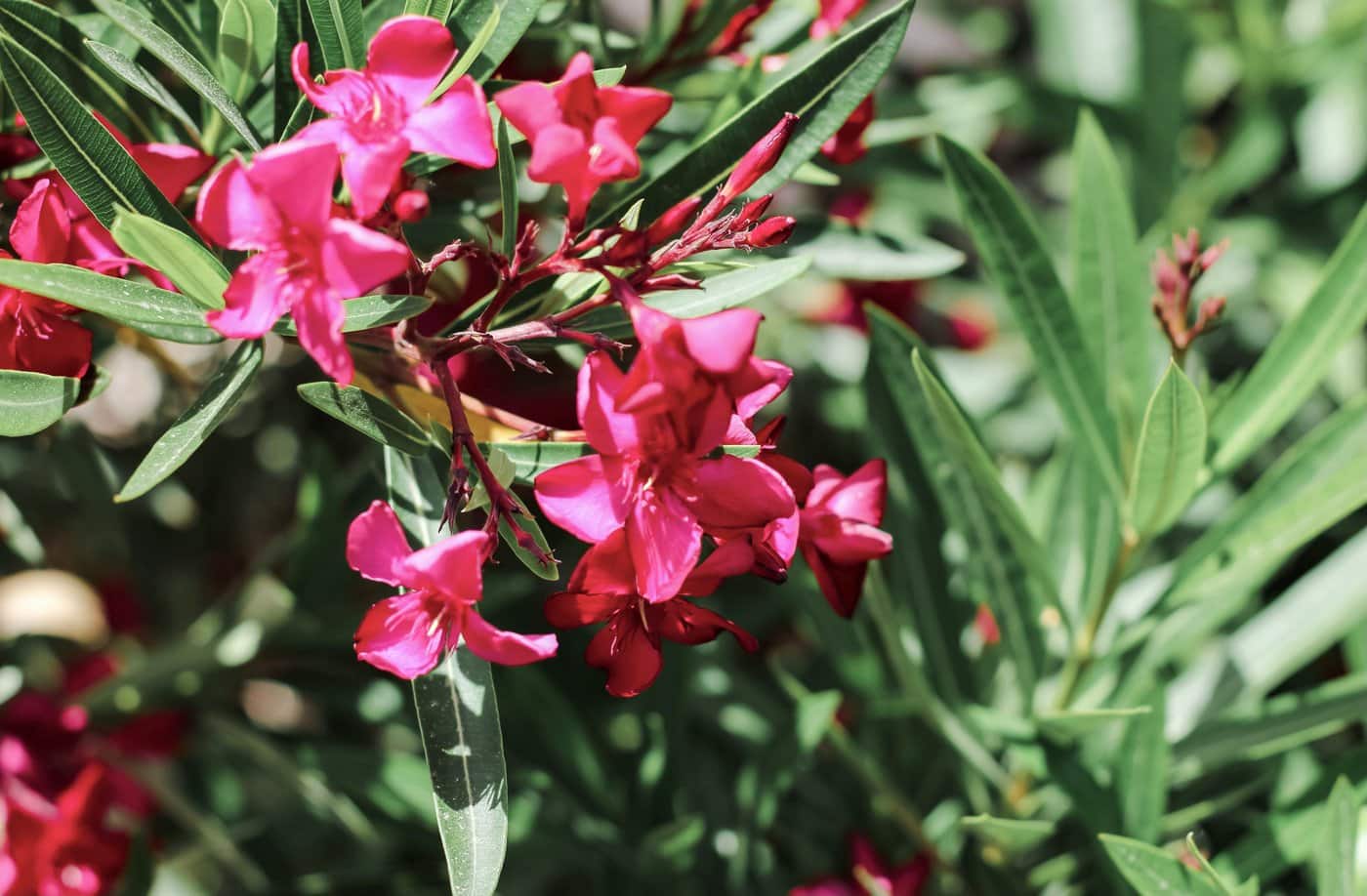
What can oleander do to you?
Why’s it so dangerous? Two of the ingredients in oleander are oleandrin and digitoxigenin, which are related to the heart drug digitalis. (A 2010 medical study noted, “oleander poisoning can be fatal with relatively small amounts ingested,” and says references an earlier study that calculated the lethal oleander leaf dose to be approximately 4 grams.
They added, “Practicing physicians should understand the potential lethal properties of oleander and its availability throughout the world.”)
Signs of oleander poisoning include gastrointestinal issues (nausea, vomiting, stomach pain, bloody diarrhea), heart problems (slowed pulse, irregular heartbeat, dizziness) along with other symptoms like dilated pupils and drowsiness. (You can see a detailed list of oleander poisoning symptoms here.)
Despite the obvious need to exercise caution, it’s worth noting that a study by the Cardiovascular Toxicology Research Laboratory at the University of Texas Medical Branch in Galveston found that the adult death rate from oleander poisoning is generally low — smaller children and animals are most at risk.
But still, it might have its upside: oleander extracts are being tested for medical benefits, including their potential to treat cancer. (In fact, the American Cancer Society said that Arab physicians first used oleander as a cancer treatment back in the eighth century AD.)
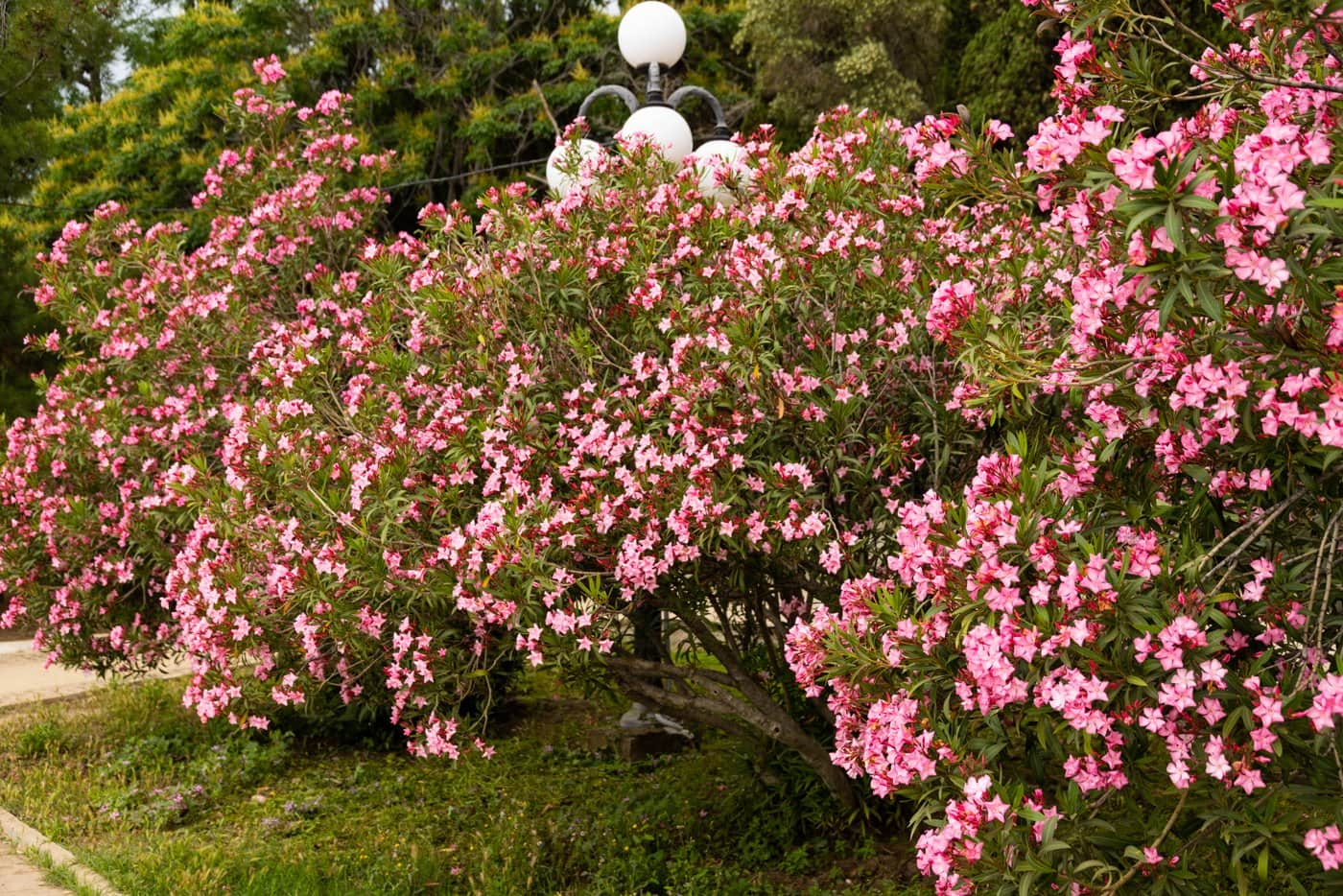
Should you get your oleander removed?
Many of us have plants nearby that are potentially poisonous, but that’s not a problem when we don’t interact with them — let alone eat them.
But if you have kids or animals who might pick the flowers, play with the branches, or graze on the leaves, yes, you might want to have them removed. (You can hire a professional to do the job, though some people handle taking them out on their own.)
In many cases, though, oleander is a beautiful, colorful, low-maintenance survivor that can stay alive even when completely neglected.
It’s also versatile — it can be used as ground cover, grown as a shrub, or made to create a dense “living screen” wall, assuming your yard has a safe space for such things.
Despite its beauty, though, remember that oleander can pack a powerful punch, so evaluate your own garden’s situation with that in mind.
What to do if you suspect oleander poisoning
If you, someone else, or a pet has possibly — or definitely — come into close contact with an oleander plant, call 911 or one of the appropriate poison control centers:
PEOPLE: Poison Control Center at 1-800-222-1222 (consider adding this as a phone contact)
PETS: ASPCA’s Animal Poison Control Center at 1-888-426-4435

